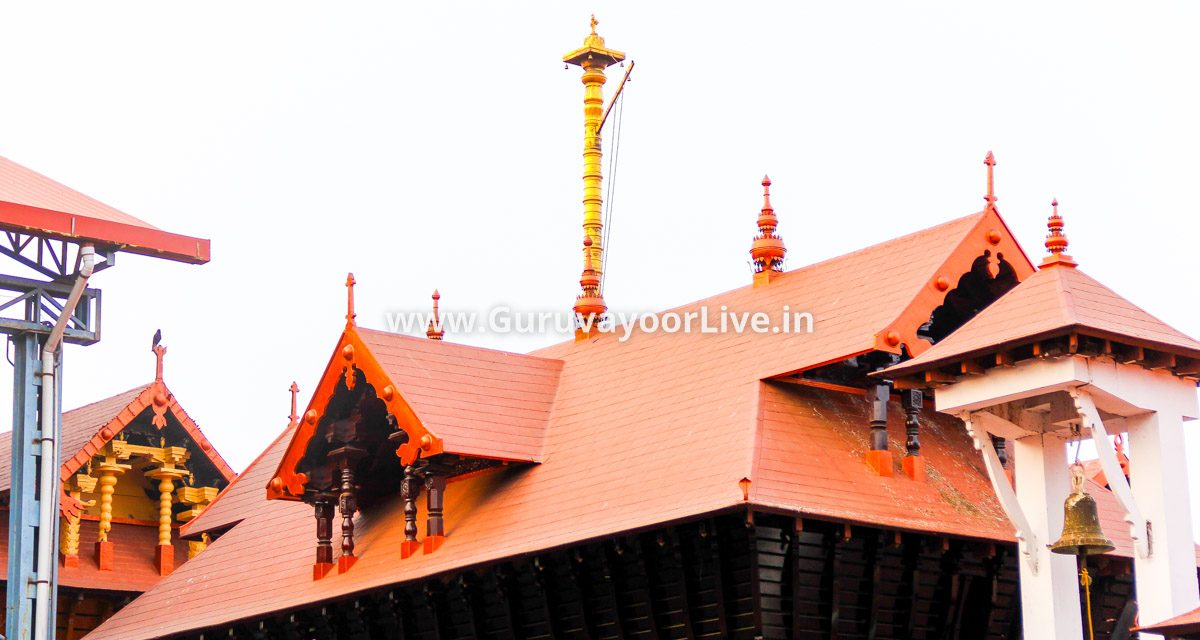Guruvayur Temple Darshan Timings For Senior Citizens
Home » Temple » Guruvayur Temple Darshan Timings For Senior Citizens

Guruvayur Temple Darshan Timings For Senior Citizens
THE TEMPLE OPENS AT 3.00 AM
3.00am to 3.30am Nirmalyam
3.20am to 3.30am
Oilabhishekam, Vakacharthu, Sankhabhishekam
3.30am to 4.15am Malar Nivedyam, Alankaram
4.15am to 4.30am Usha Nivedyam
4.30am to 6.15am Ethirettu pooja followed by Usha pooja
7.15am to 9.00am Seeveli, Palabhishekam, Navakabhishekam, Pantheeradi Nivedyam, and Pooja
11.30am to 12.30pm Ucha pooja (the noon pooja)
TEMPLE WILL BE CLOSED BETWEEN 1.30PM AND 4.30PM AND REOPENS AT 4.30 PM
4.30pm to 5.00pm Seeveli
6.00pm to 6.45pm Deeparadhana
7.30pm to 7.45pm Athazha pooja Nivedyam
7.45pm to 8.15pm Athazha pooja
8.45pm to 9.00pm Athazha seeveli
9.00pm to 9.15pm Thrippuka, Olavayana
9.15pm
The Sreekovil will be closed. On the day of Special Illuminations called “Vilakku”, the Thripuka is performed after that. The Sreekovil will be closed after Thripuka. Then the Krishnanattam, a colorful traditional dance-drama on Lord Krishna’s life is enacted inside the Temple on specified days.
*The timings given are approximate. It may vary if there is Udayasthamana pooja or on certain special occasions.
Now let’s know about Guruvayur Temple. Guruvayur Sri Krishna Temple is a Hindu temple dedicated to the Hindu god Guruvayurappan (a four-armed affiliation of the Hindus god Vishnu), located in the town of Guruvayur in Kerala, India. It is one of the most important places of worship for Hindus of Kerala and is often referred to as Bhuloka Vaikunta. which translates to the “Holy Abode of Vishnu on Earth”.
The presiding deity of the Guruvayur Temple is Vishnu, worshipped in the form of Guruvayurappan. The central icon is a four-armed standing Krishna carrying the conch Panchajanya, the discus Sudarshana Chakra, the mace Kaumodaki and a lotus with a Holy basil garland. This image represents the majestic form of Vishnu as revealed to Krishna’s parents Vasudeva and Devaki around the time of Krishna’s birth; hence Guruvayur is also known as “Dwarka of South India”. He is currently worshipped according to routines laid down by Adi Shankara and later written formally in the Tantric way, the inter-religious spiritual movement that arose in medieval India, by Cennas Narayanan Nambudiri (born in 1427). The Cennas Nambudiris are the hereditary tantris (high priest) of the Guruvayur Temple.
The temple (puja) routines are strictly followed. The tantri is available full-time at the Temple to ensure this. The Melsanti (Chief Priest) enters the sanctum sanctorum in the morning and does not drink anything up to the completion of “noon worships” at 12:30 PM.
According to legends, the deity worshipped here is more than 5000 years old. In the 14th century, “Kokasandesam” (a Tamil literary work), references to a place called Kuruvayur are made. As early as the 16th century (fifty years after Narayaniyam was composed) many references to Kuruvayur are seen. In ancient Dravidian languages, “kuruvai” means “sea”, hence the village on the Malabar Coast may be called Kuruvayur. The earliest temple records date back to the 17th century. The earliest mention of the many important Vishnu temples of Kerala are found in the songs of Alwars, Tamil saints, whose time-line is not exactly fixed. Mamankam was a very famous local event at Tirunavaya, on the bank of Bharatappuzha. The battles between the Kozhikode under Samoothiris and Valluvanad popularised Guruvayur Temple. Due to the prolonged battles, people across the riverbank started preferring Guruvayur. Even the Samoothiri of Kozhikode become a devotee and thus his subjects followed him. The central shrine that is seen today is said to have been rebuilt in 1638 AD. “Viswabali” was performed later to propitiate all the spirits, good and bad. By the end of the 16th century Guruvayur had become the most popular pilgrimage centre in Kerala.









